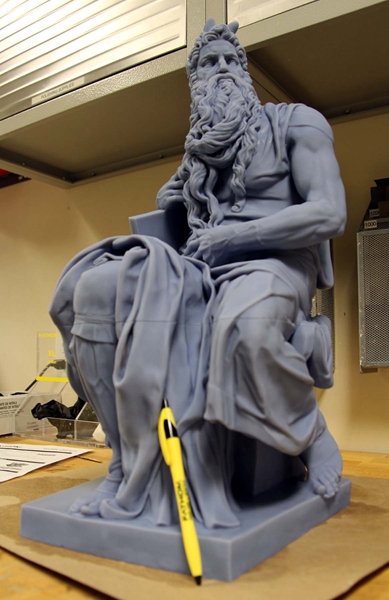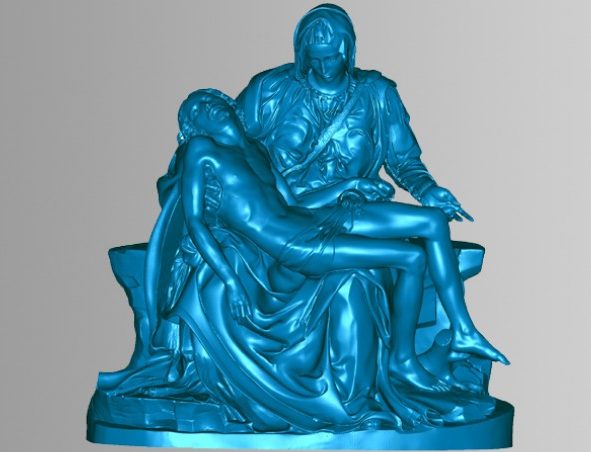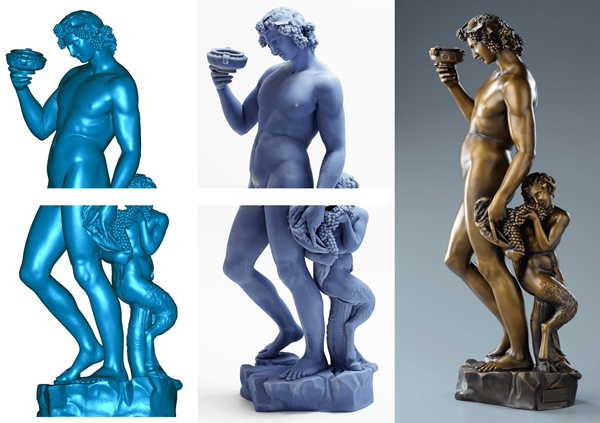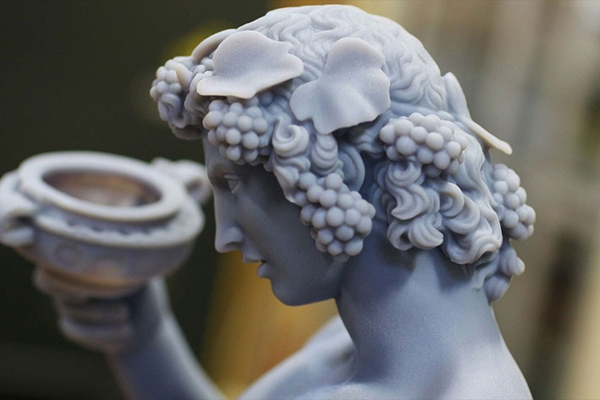3D Printing,3D Scanning,3D printed sculpture,Casting
3D scanning and3D printing technology, which can be used to preserve and save historically valuable artwork, is certainly one of the most versatile capabilities. What kind of sparks will come from colliding these advanced modern technologies with traditional craftsmanship?
On November 7, 2022, Fathom, an American advanced manufacturing company, in collaboration with other companies around San Francisco, issued a method that allows for the perfect reproduction of valuable artwork using 3D scanning, 3D printing and bronze casting processes. The collaboration with Fathom, which also includes metal casting company Artworks Foundry and 3D scanning company Scansite, has resulted in the re-creation of Michelangelo's famous sculpture of the Virgin of Mercy, in addition to 27 works by other Renaissance masters.

△Printing the Moses 3D model from the collected 3D data
The purpose of this collaboration
The team's experts say they can produce almost perfect replicas of such valuable works of art from the other side of the world, making this one of the most advanced 3D replication projects ever undertaken. They explain that while sculptors have been using the same engraved metal casting technique for centuries, the combination of 3D scanning and printing offers a more seamless and sustainable way to reproduce these priceless works of art.
Piero Mussi, founder of Artwork Foundry, says, "Now we have the ability to reproduce something that is very faithful to the original work. This has never been done in the past."

△ Digital model of Michelangelo's "Madonna of Mercy" after scanning
Mussi further explained that he learned the lost wax technique from Italian metalworkers 40 years ago. Now, he combines 3D scanning and 3D printing techniques. He believes this is one of the most significant developments in centuries. Although Mussi uses his traditional process in his productions, he believes that 3D printing has the ability to reproduce these details better, which is the main reason he strongly supports 3D printing technology. mussi says, "We have a very good reproduction, which no other artist has been able to do yet. Now, only our new technology can do it."


△ From 3D data to 3D printed statue of the god of wine
Advanced Modern Craftsmanship and Traditional Craftsmanship Together
Scansite is responsible for collecting scans of the original castings, which are then processed into point clouds and 3D models. After completing the final files, they handed them over to Fathom, who used a 3D printer to create the model. Once the models are 3D printed, they are given to Musi and Artworks Foundry, who use them to make candle molds. The candle molds are eventually used in a lost wax casting process to recreate the bronze castings, a process that has remained the same for thousands of years. The difference is that they are now using a new approach combined with modern 3D scanning and 3D printing technology.
The team says many of these bronze castings exist in Berkeley, Calif. The degree of perfection in the replicas is unprecedented, thanks to the first use of highly advanced







